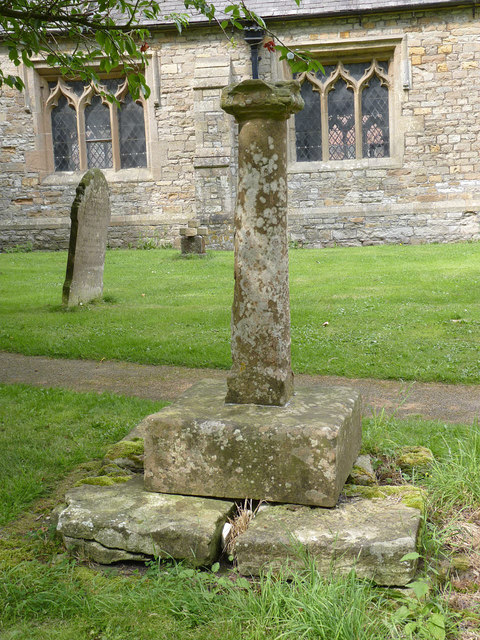SK7267 : Church of St Michael, Laxton
taken 10 years ago, near to Laxton, Nottinghamshire, England

Grade I listed.
There is no mention of the church at Laxton in the Domesday survey, however this does not mean the nonexistence of such a building.
The church dates from the 13th century onwards, and was restored and partly rebuilt in 1860. It has a tower, nave, north aisle and chapel, south aisle, chancel, south chancel chapel and a south porch.
The tower was 14th century, and in circa 1490 was rebuilt and also re-roofed in 1859 when it was moved east by one bay. There is a stone on the south side of the tower which possibly features Norman ornamentation. The tower has six bells.
The nave has six bays from around 1490, this was reduced to 4 bays in 1860. The nave parapet is battlemented with crocketted pinnacles and seven large gargoyles. There are six 15th century windows either side in the clerestory.
The north aisle is mainly 19th century of three bays, with 15th century windows. The north chancel chapel and vestry is also 19th century and there is a 13th century style door. The south aisle was rebuilt in 1860, as was the south porch. Outside is a discarded stone sundial of 1820.
The north and south nave arcades are 13th century of three bays. There are four round piers with moulded capitals.
The tower arch is 13th century. The north aisle has an east end oak screen dated 1522 and restored in the 20th century.
The chancel has a three Bay arcade on either side, and also an Easter Sepulchre of the 14th century.
There is a 14th century triple sedilia and double piscina. The chancel was probably rebuilt around 1400.
The font is 17th century, an octagonal bowl with a square base. The cover is 20th century.
There is a table tomb with stone figures of a Knight and Lady, and an oak figure of a second Lady, to Adam de Everingham, 1341. There are also other figures which are members of the de Everingham family from the 13th and 14th century. They were Lords of the Manor at that time, and a family of great power and wealth, endowed with the custodianship of the Royal Forests of Nottinghamshire and Derbyshire, down to the end of the 13th century.
Listed buildings and structures are officially designated as being of special architectural, historical or cultural significance. There are over half a million listed structures in the United Kingdom, covered by around 375,000 listings.
Listed status is more commonly associated with buildings or groups of buildings, however it can cover many other structures, including bridges, headstones, steps, ponds, monuments, walls, phone boxes, wrecks, parks, and heritage sites, and in more recent times a road crossing (Abbey Road) and graffiti art (Banksy 'Spy-booth') have been included.
In England and Wales there are three main listing designations;
Grade I (2.5%) - exceptional interest, sometimes considered to be internationally important.
Grade II* (5.5%) - particularly important buildings of more than special interest.
Grade II (92%) - nationally important and of special interest.
There are also locally listed structures (at the discretion of local authorities) using A, B and C designations.
In Scotland three classifications are also used but the criteria are different. There are around 47,500 Listed buildings.
Category A (8%)- generally equivalent to Grade I and II* in England and Wales
Category B (51%)- this appears generally to cover the ground of Grade II, recognising national importance.
Category C (41%)- buildings of local importance, probably with some overlap with English Grade II.
In Northern Ireland the criteria are similar to Scotland, but the classifications are:
Grade A (2.3%)
Grade B+ (4.7%)
Grade B (93%)
Read more at Wikipedia Link
